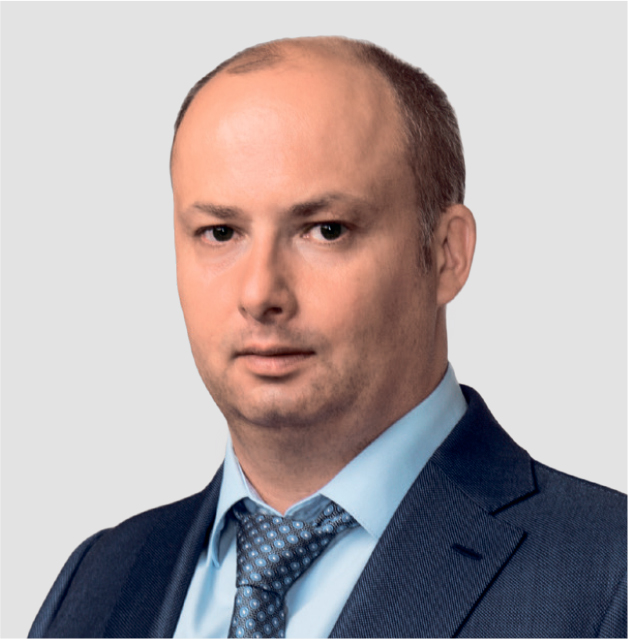RusHydro’s investments are governed by the Regulations on Managing Investing Activities Performed in the Form of Capital Investments.

Investment programs are approved by the Company’s Board of Directors and respective boards of directors in RusHydro Group’s subsidiaries, with the programs of electricity supplying subsidiaries additionally reviewed by the authorized government agencies. The draft investment programs of subsidiaries are based on the Group’s consolidated investment program, which is approved by the Management Board and presented to the Board of Directors of PJSC RusHydro. As far as electricity suppliers are concerned, the drafts are submitted to the authorized government agencies after being reviewed by the boards of directors in respective subsidiaries.

In line with Investment Approval Rules for Electricity Suppliers approved by Resolution of the Russian Government No. 977 On Investment Programs of Electricity Suppliers dated December 1, 2009, investment programs of RusHydro’s electricity supplying subsidiaries are reviewed and approved by the authorized government agencies (the Russian Ministry of Energy or regional authorities) with inputs from government agencies in the regions where such investment projects are implemented and federal government agencies, including the Ministry of Finance, Ministry of Construction, Housing and Utilities, Ministry of Industry and Trade, Ministry of Economic Development, Federal Antimonopoly Service, Market Council Non-Profit Partnership and System Operator of the Unified Energy System.
Pursuant to Resolution of the Russian Government No. 1502 On Procedure for the Ministry of the Russian Federation for the Development of the Russian Far East and Arctic to Approve the Investment Programs and Development Plans of State Corporations, State Companies and Other State-Owned Organizations As Regards Their Implementation in the Far Eastern Federal District of Russia dated December 27, 2016, draft investment programs of RusHydro’s subsidiaries that are not electricity suppliers but engage in investment activities in the Far Eastern Federal District of Russia are subject to approval by the Ministry for the Development of the Russian Far East and Arctic.
Our cooperation with the country’s federal and regional governments extends beyond developing and reviewing our investment program, with working on proposals and updates to energy policy papers (the “Policy Papers”) also on our agenda. These documents include:
RusHydro Group works to ensure that the Policy Papers contain only the most recent information on its generating facilities and comply with the Group’s plans.
The Group’s cooperation with regional governments focuses on drafting proposals and updating information on heat supply project blueprints for Russian cities and towns. For example, PJSC RusHydro’s subsidiaries participated in public hearings on heat supply project blueprints for Khabarovsk, the Vladivostok and Artyom municipal districts, and other Far Eastern municipalities.

RusHydro’s updated investment program for 2019 and investment program for 2020−2029 were approved by Order of the Russian Ministry of Energy No. 20@ On Approval of RusHydro’s Investment Program for 2020−2029 and Amendments to RusHydro’s Investment Program Approved by Order of the Russian Ministry of Energy No. 6@ of October 22, 2018 dated December 9, 2019. RusHydro’s updated consolidated investment program for 2019 was approved as part of the Group’s Consolidated Business Plan for 2019 by resolution of the Board of Directors* . RusHydro’s consolidated investment program for 2020- 2024 was approved as part of the Group’s Consolidated Business Plan for 2020−2024 by resolution of the Board of Directors*.

Spending on the consolidated investment program in 2019 amounted to RUB 92.7 bn, including RUB 65.5 bn for the investment projects of RusHydro Subgroup and RUB 27.2 bn for the projects of RAO ES East Subgroup.
New capacities commissioned in 2019:

— Plans for the implementation of the Investment program for 2020−2025.
More
— Plans for the implementation of the Investment program for 2020−2025:
In 2020, RusHydro Group plans to invest RUB 98 bn, including those aimed at commissioning of the CHPP in Sovetskaya Gavan with installed electric and heat capacity of 126 MW and 200 Gcal/h respectively. It is the final project of the investment cycle for the construction of priority projects of thermal generation in the Far Eastern Federal District that was run by the Decree of the President of the Russian Federation from
RusHydro Group fully preserves the volume of planned investment program in 2020−2024 in the amount of RUB 348 bn for the following projects:
modernization of hydropower plants, thermal power stations and electric networks;
completion of the Ust-Srednekanskaya HPP with the commissioning of the fourth hydropower unit — of 259.5 MW (to achieve the design capacity of 570 MW);
construction of the first stage of the two single-circuit 110 kV Pevek-Bilibino lines in Chukotka in the run-up to the upcoming refurbishment of the Chaun and Bilibino energy hub following the decommissioning of power units at Bilibino NPP, which reached the end of its life cycle;
implementation of the program of construction of smaller HPPs (Krasnogorskaya SHPP-1 and SHPP-2).
Despite the negative consequences for the Russian economy driven by the spread of the coronavirus infection, RusHydro Group maintains a stable financial position and is ready to utilize additional resources for the implementation of infrastructure projects in the utilities sector. In accordance with the decision of the Russia Government, a proposal was made to increase the Investment program’s volume by RUB 171 bn (without VAT, in 1Q 2019 prices, based on feasible study results) for construction and modernization of the following thermal power plants in the Far East: Artyomovskaya CHPP-2, Khabarovskaya CHPP-4, the second stage of Yakutskaya GRES-2, and modernization of turbo units and boilers at Vladivostokskaya CHPP-2. Total installed electric and heat capacity of the above-mentioned projects amounts to 1.3 GW and 2,600 Gcal/h respectively.
Currently RusHydro is at the final stage of developing the project documentation for these facilities. After receiving the conclusion of the state expert review RusHydro plans to start the construction. The above-mentioned projects are already included in the draft of the Consolidated Investment Program of the RusHydro Group, that was reviewed by the Board of Directors in March 2020.
The electric power industry is the engine of the economy, and investments in the construction of electric power infrastructure aimed to connect new consumers will contribute with a multiplier effect to loading the Russian power engineering industry, building and construction sector, to creating new workplaces and increasing of tax payments. The launch of a new investment cycle with projects included in the Comprehensive plan for upgrading and expanding the main infrastructure will ensure the reliability and continuity of energy supply to consumers in the Far Eastern Federal District and accelerate the development of the Russian economy.






The significant difference between the actual spending under the consolidated investment program and the 2019 target (- RUB 10.5 bn) was mainly attributable to:
Capacity commissioning in 2019
| Type | Russian Far East | European part of Russia and Siberia | ||
|---|---|---|---|---|
| Target | Actual | Target | Actual | |
| Electricity generation, MW | 442.2 | 446.1 | 394.6 | 408.5 |
| Heat, Gcal/h | 324,0 | 326,4 | - | - |
| Power lines, km | 1,615.3 | 1,547.2 | 3.4 | 2.0 |
| Transformer capacities, MVA | 525.3 | 399.4 | 1.7 | 0.4 |

Targets for capacity commissioning
| Type | Target |
|---|---|
| Electricity generation, MW | 169.3 |
| Heat, Gcal/h | 202.5 |
| Transformer capacities, MVA | 614.6 |
| Power lines, km | 1,556.3 |
RusHydro builds and commissions power plants and develops energy infrastructure in the Far Eastern Federal District, helping to further national goals related to supplying electricity to citizens and industrial facilities. RusHydro Group’s investment projects are focused on replacing the retiring energy capacities with new ones fitted with efficient cutting-edge equipment, making the energy system more reliable, eliminating energy shortages, and creating a capacity margin and conditions to spur local economic development. RusHydro’s investment projects in the Russian Far East are included in the Comprehensive Trunk Infrastructure Upgrade and Extension Plan until 2024 as approved by Decree of the Russian Government No. 2101-r of September 30, 2018.

Key investment projects and their impact on local economies across the Group’s footprint [203−2]
| Project | Investments, RUB mn | Indirect economic impact | |
|---|---|---|---|
| 2019 | Total | ||
|
Nizhne-Bureyskaya HPP
Installed capacity: 320 MW Average annual output: 1,670 mn kWh Year of commissioning: 2019 |
3,055.2 | 53,409.4 |
Social and economic effects:
|
|
Sakhalinskaya GRES-2 Installed capacity: 120 MW Average annual output: 840 mn kWh Year of commissioning: 2019 |
6,183.9 | 35,611.3 |
Social and economic effects:
|
|
Zaramagskaya HPP-1
Installed capacity: 346 MW Average annual output: 842 mn kWh Year of commissioning: 2019 |
5,025.9 | 47,968.7 |
Social and economic effects:
|
|
CHPP in Sovetskaya
Gavan
Installed capacity: 126 MW, 200 Gcal/h Average annual output: 630 mn kWh Year of commissioning: 2020 |
7,066.9 | 33,820.8 |
Social and economic effects:
|
|
Second stage of gasification at Anadyrskaya CHPP
Year of commissioning: 2020 |
130.9 | 394.2 |
Social and economic effects:
|
|
Ust-Srednekanskaya HPP
Installed capacity: 570 MW (142.5 MW third stage commissioned in 2018) Average annual output: 2,555 mn kWh Year of commissioning: 2022 |
5,721.2 | 76,927.3 |
Social and economic effects:
|
|
Construction of two
single-circuit 110 kV Pevek-Bilibino power
lines (construction stage
No. 1)
Length: 490.59 km Year of commissioning: 2023 |
114.5 | 24,733.3 |
Social and economic effects:
|
|
Upgrade of turbo
generators No. 1, 2 and 3
and boiler units No. 1−8
at Vladivostokskaya
CHPP-2
Installed capacity: 360 MW, 570 Gcal/h Year of commissioning: 2025 |
58.2 | 26,452.8 |
Social and economic effects:
|
|
Construction of Khabarovskaya CHPP-4
Installed capacity: 328 MW, 1,374 Gcal/h Year of commissioning: 2025 |
114.6 | 52,396.8 |
Social and economic effects:
|
|
Construction of Yakutskaya GRES-2
(second stage)
Installed capacity: 154 MW, 194 Gcal/h Year of commissioning: 2025 |
35.4 | 30,275.5 |
Social and economic effects:
|
|
Construction of Artyomovskaya CHPP-2
Installed capacity: 420 MW, 483 Gcal/h Year of commissioning: 2026 |
122.5 | 130,132.8 |
Social and economic effects:
|
Two people were physically displaced due to the construction of Krasnogorskaya SHPP-2. RusHydro Group’s construction projects did not involve economic migration.
As part of constructing Ust-Dzhegutinskaya SHPP, Krasnogorskaya SHPP-1 and Krasnogorskaya SHPP-2, the Group signed agreements to purchase five land plots with a total area of 20,473 m2. The land plots are classified as urban lands for subsistence farming. No other compensations were paid with regard to RusHydro Group’s construction projects.
In 2017, two people received RUB 4,170 thousand in compensations under the project to build Ust-Dzhegutinskaya SHPP. In 2018, two people received RUB 6,383 thousand in compensations under the project to build Krasnogorskaya SHPP1. In 2019, two people received RUB 4,592 thousand in compensations under the project to build Krasnogorskaya SHPP-2. [EU22]
Construction projects in the Far East [OS]
A CHPP in Sovetskaya Gavan is one of RusHydro Group’s four projects to erect new generating facilities in the Far East in line with a Decree by the President of Russia.
Under the Russian President’s Decree No. 1564 dated November 22, 2012, RusHydro received RUB 50 bn as contribution to its authorized capital from the state budget to finance the construction of the following power generation facilities in the Far East:
Three facilities have already been commissioned: Blagoveshchenskaya CHPP (second stage) in December 2016, Yakutskaya GRES-2 (first stage) in November 2017, and Sakhalinskaya GRES-2 in November 2019.
The CHPP construction site in Sovetskaya Gavan currently has over 1,500 employees and over 50 units of equipment. The bulk of construction and installation work has been completed, with the key equipment already installed. Efforts are now underway to install auxiliary equipment, tank farm, fuel supply systems, complete interior finishing, put in place engineering systems, and construct on-site access roads. Pre-commissioning has entered its active stage, including energization of 110 kV outdoor switchgear equipment and balance-of-plant switchgear, and boiler plant No. 1 has gone through test runs to fine-tune modes of combustion using diesel fuel.
The new CHPP will require a lot of municipal consumers in Sovetskaya Gavan to be transitioned to centralized heat supplies, making it advisable to have the plant commissioned in 2020 after the peak load period of 2019−2020 autumn and winter season is over.
Commissioning is projected for Q3 2020* .
Measures are being taken to accelerate the construction process:
Construction and installation quality assurance at RusHydro’s facilities aims to:
Key quality assurance activities include:
Our quality assurance procedures for construction and installation, materials, structures and assemblies are compliant with Russian laws, industry standards and regulations, internal engineering standards, and regulatory requirements for design documentation.
In addition to primary and secondary federal legislation, all construction works are subject to both industry and RusHydro own internal quality assurance standards. Our key design quality management principles and the employees in charge are specified in the Regulations on Managing and Monitoring Investment Projects during the Development of Documentation for Construction of RusHydro Group’s New Facilities as approved by RusHydro’s Order No. 1021 of December 28, 2018.
The Supervisory Board of the Uniform System of Conformity Assessment for Health, Safety and Environment, and Safety in the Energy and Construction Industries is developing the Uniform System of Conformity Assessment in Construction (Modernization and Renovation of Immovable Property) and requirements in respect of the corresponding control activities. Compliance monitoring is performed by the Federal Environmental, Industrial and Nuclear Energy Supervision Service.
Before a power plant is commissioned, it receives an automated diagnostic control system that will read and process measurements to help analyze the status of facilities across the hydrotechnical complex. After completion of a hydraulic structure, its measuring equipment, along with all data collected, is handed over by the construction company to the project administrator.
Quality assurance systems for new energy facilities are developed individually under agreements with the respective general contractors.
For the CHPP in Sovetskaya Gavan,
For Zagorskaya PSPP-2 and Ust-Srednekanskaya HPP, the respective project administrators have developed acceptance regulations and quality assurance systems.
For the smaller HPPs in the Stavropol Territory and Karachay-Cherkess Republic, the respective project administrators have adopted construction and installation quality assurance guidelines.
Both JSC Chirkeigesstroy and JSC Ust-SrednekanGESstroy have developed and implemented quality management systems for all hydropower facilities they have been assigned to as the general contractor. The systems are now certified under ISO 9001:2008 and ISO 14001:2004 (GOST R ISO 14001−2007).
In 2019, RusHydro produced a program to develop the power system in the Far Eastern Federal District with a view to promoting economic growth (the Program)*.
The Program’s key objective is to offer optimal solutions for the development of the power system in the Far Eastern Federal District as a way to achieve projected demand for electricity and capacity in the context of large-scale investment projects (including projects in priority development areas, the Far Eastern Hectare program, and plans to develop energy clusters) that are inherently linked to the construction of generating facilities.
The 10-year Program is designed as one of the key elements in the mid- and long-term planning strategy for the energy sector of the Russian Far East.
It also provides a list of first priority facilities required to replace the retiring capacities and meet the demand of the Far Eastern energy systems going forward*:
The above projects were approved by Decree of the Russian Government No. 1544-r of July 15, 2019 and included in the Comprehensive Trunk Infrastructure Upgrade and Extension Plan until 2024 as approved by Decree of the Russian Government No. 2101-r of September 30, 2018. The work on relevant design and cost estimates is currently underway.
